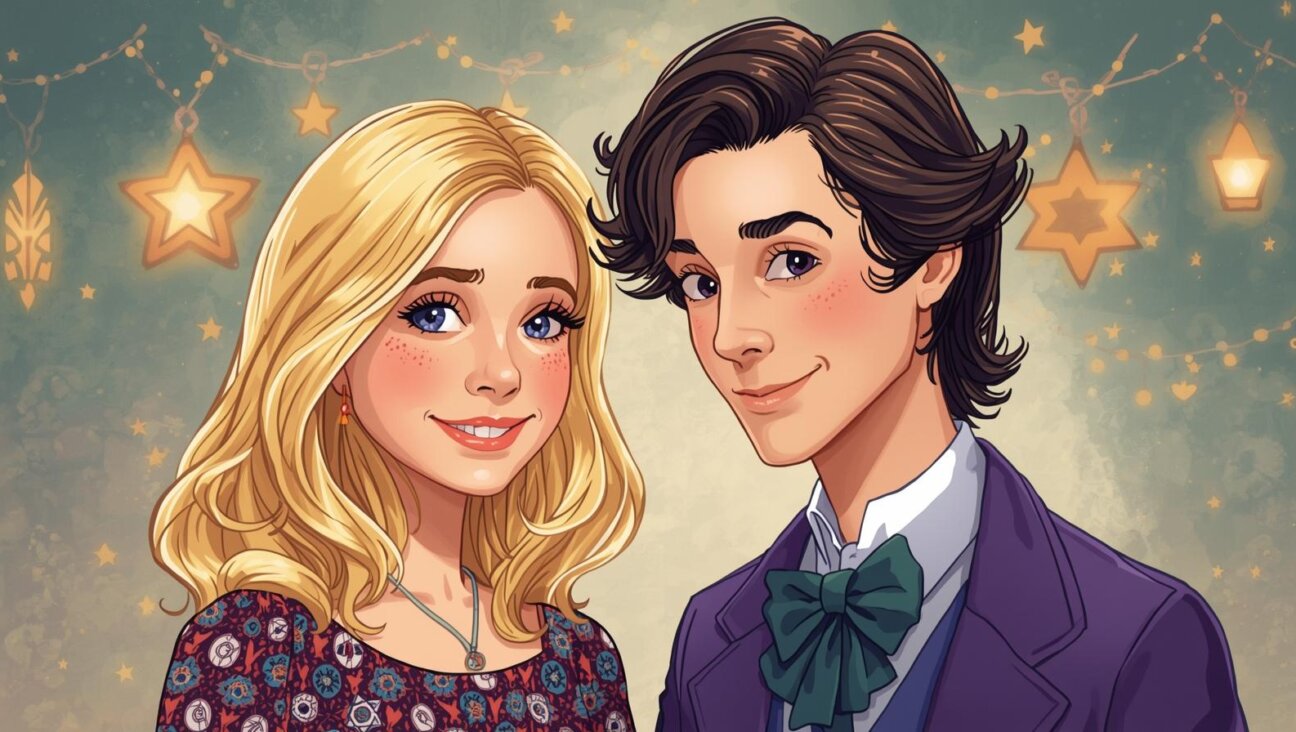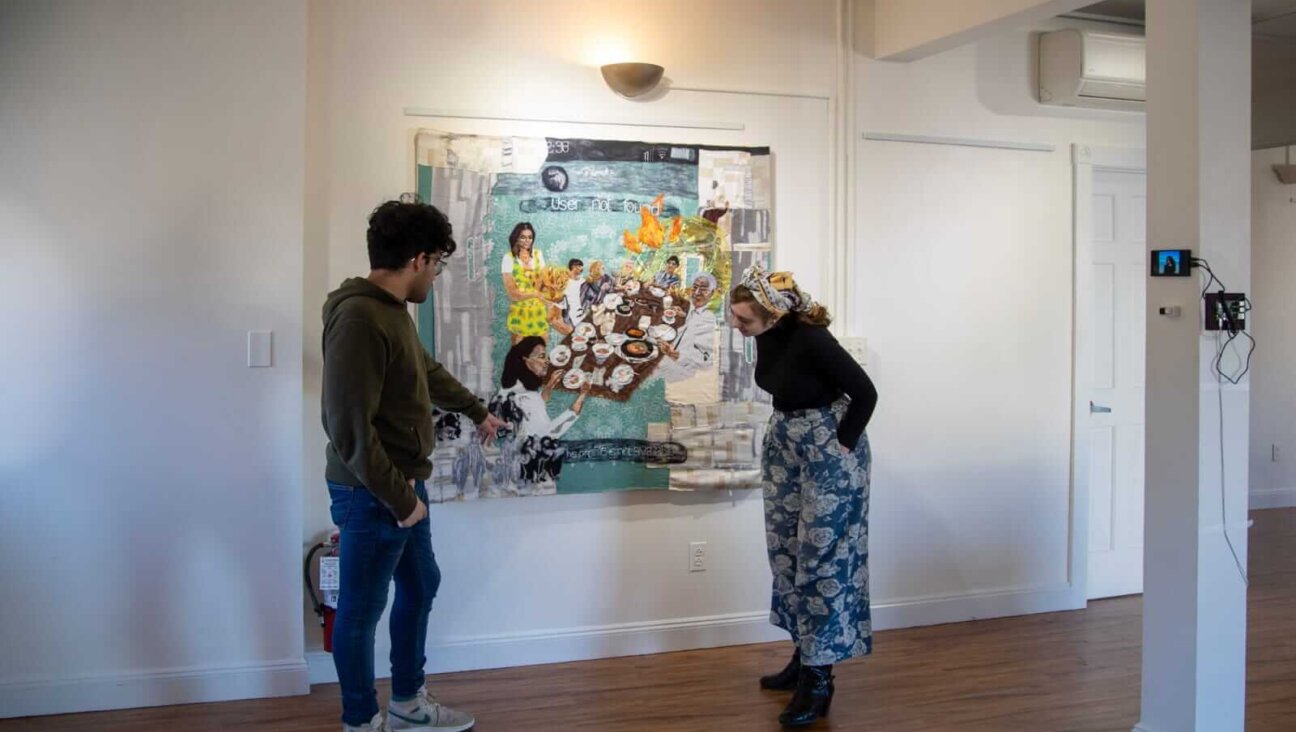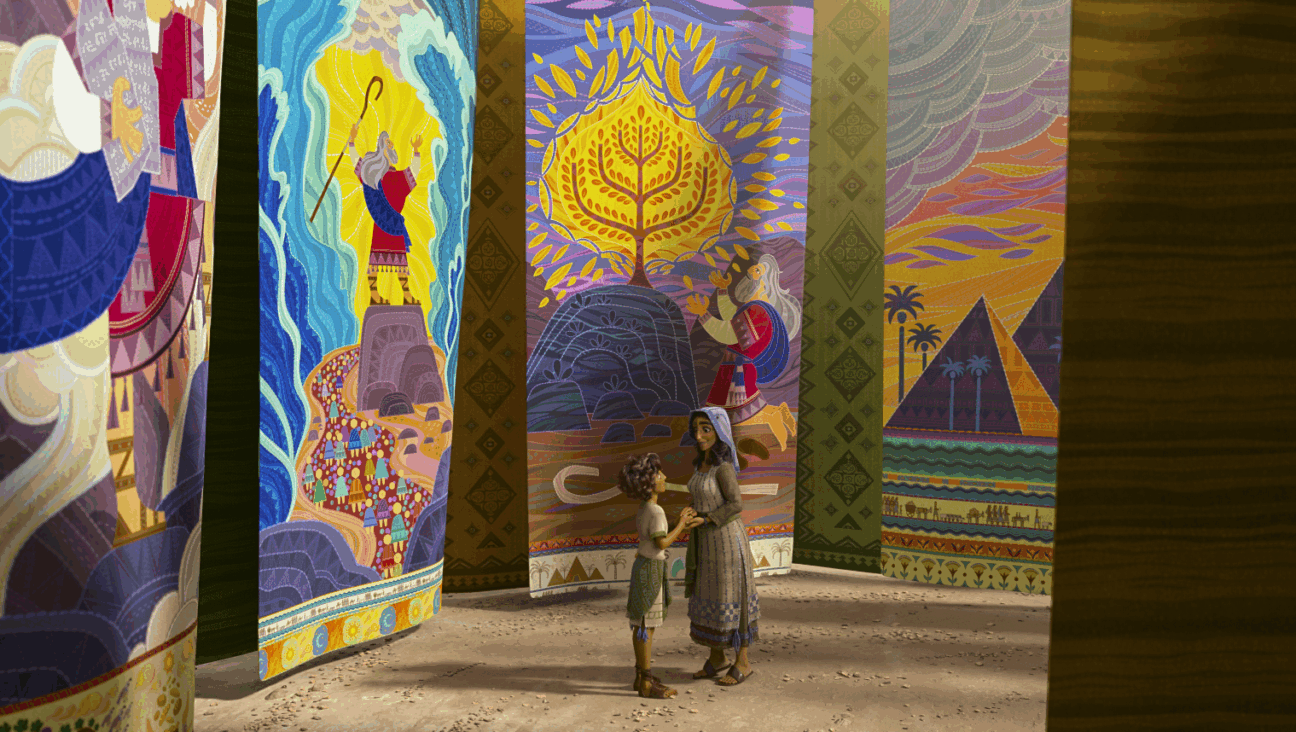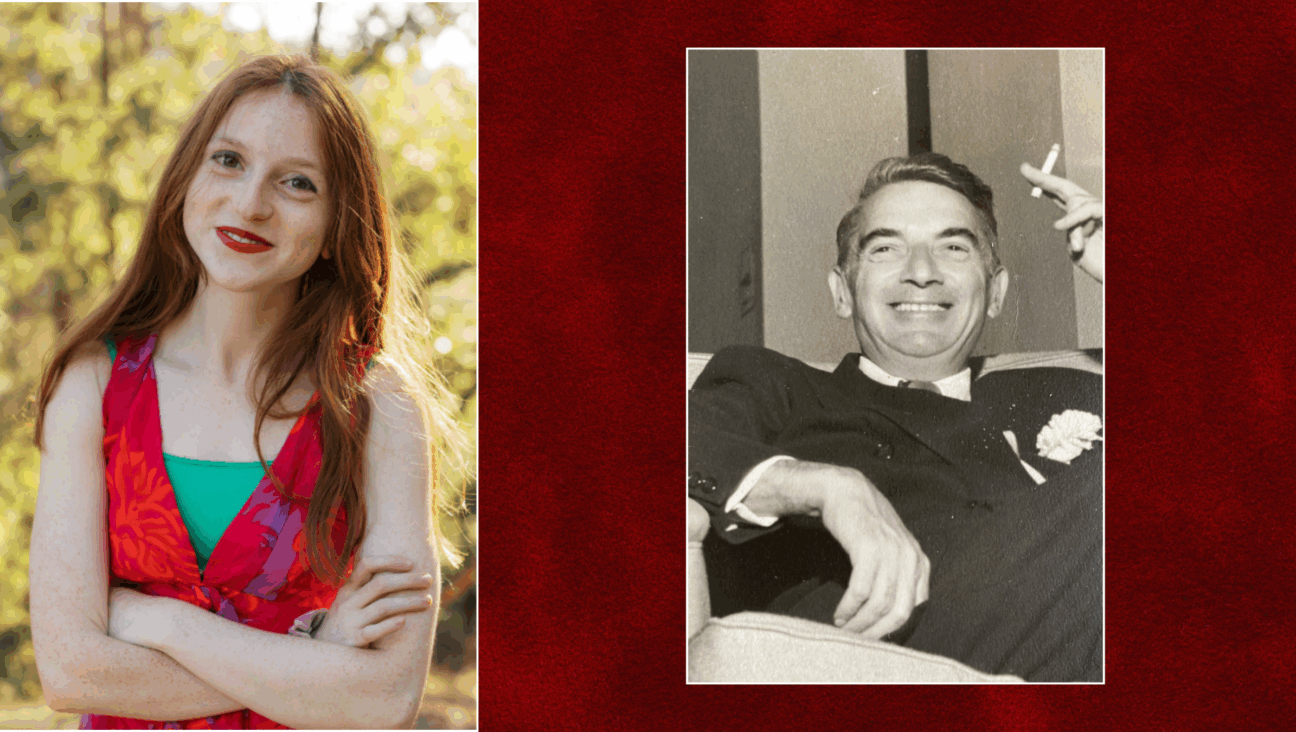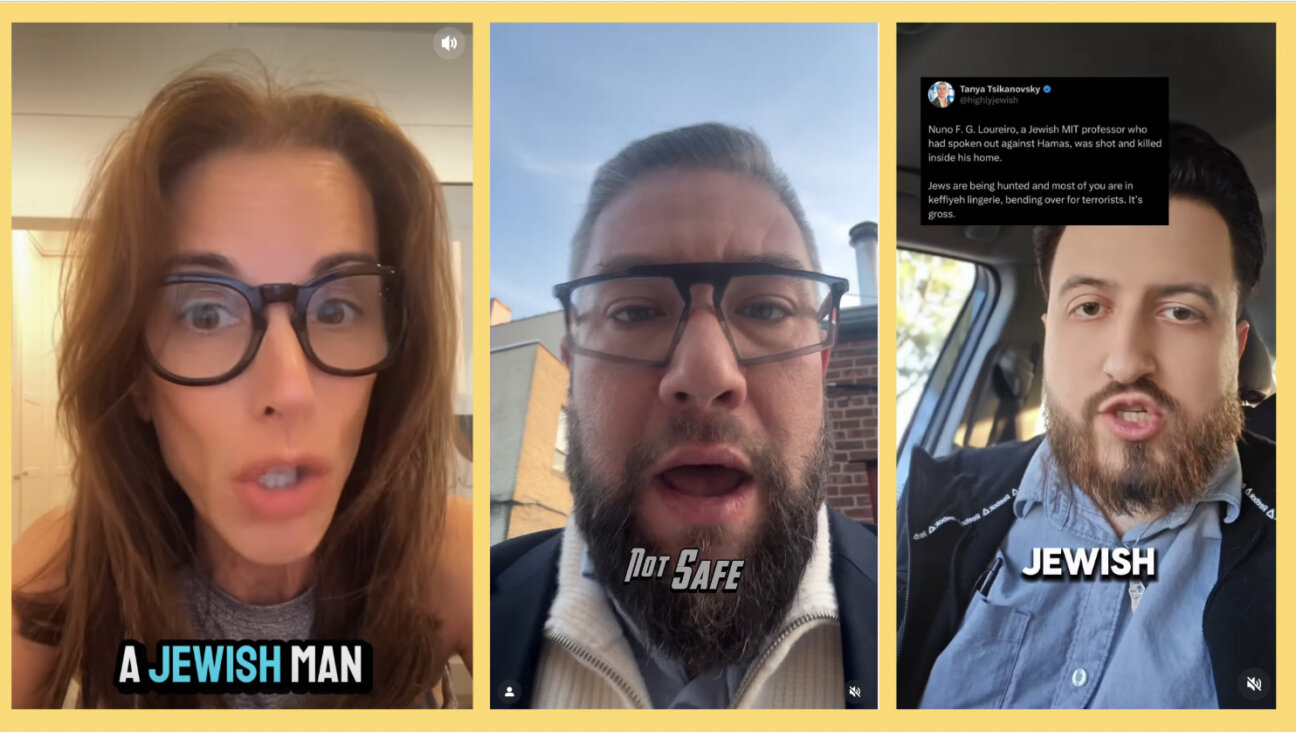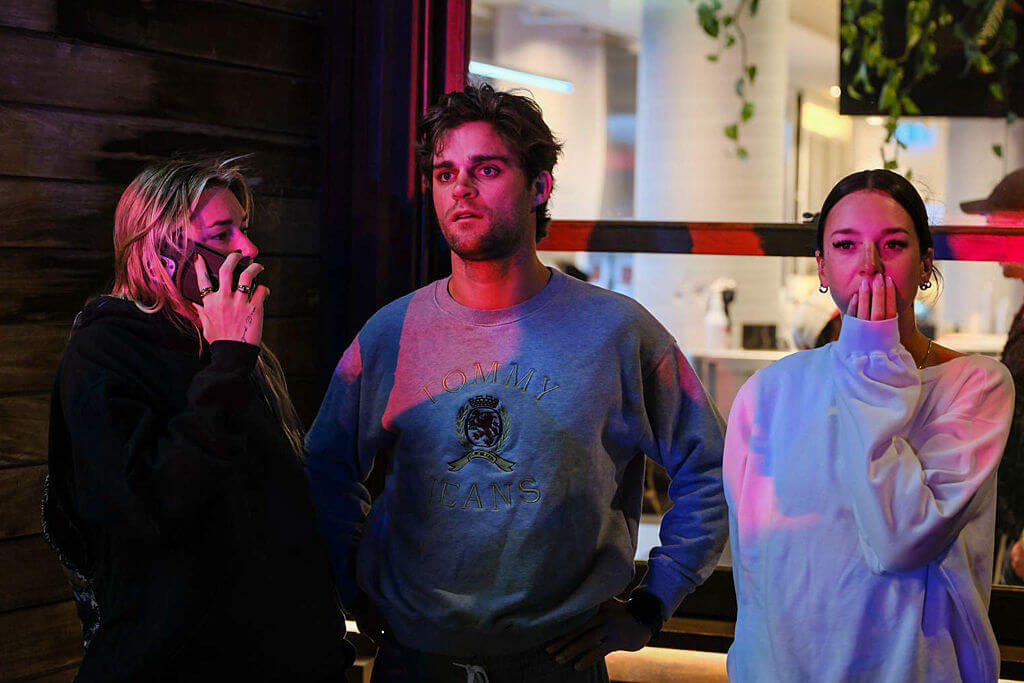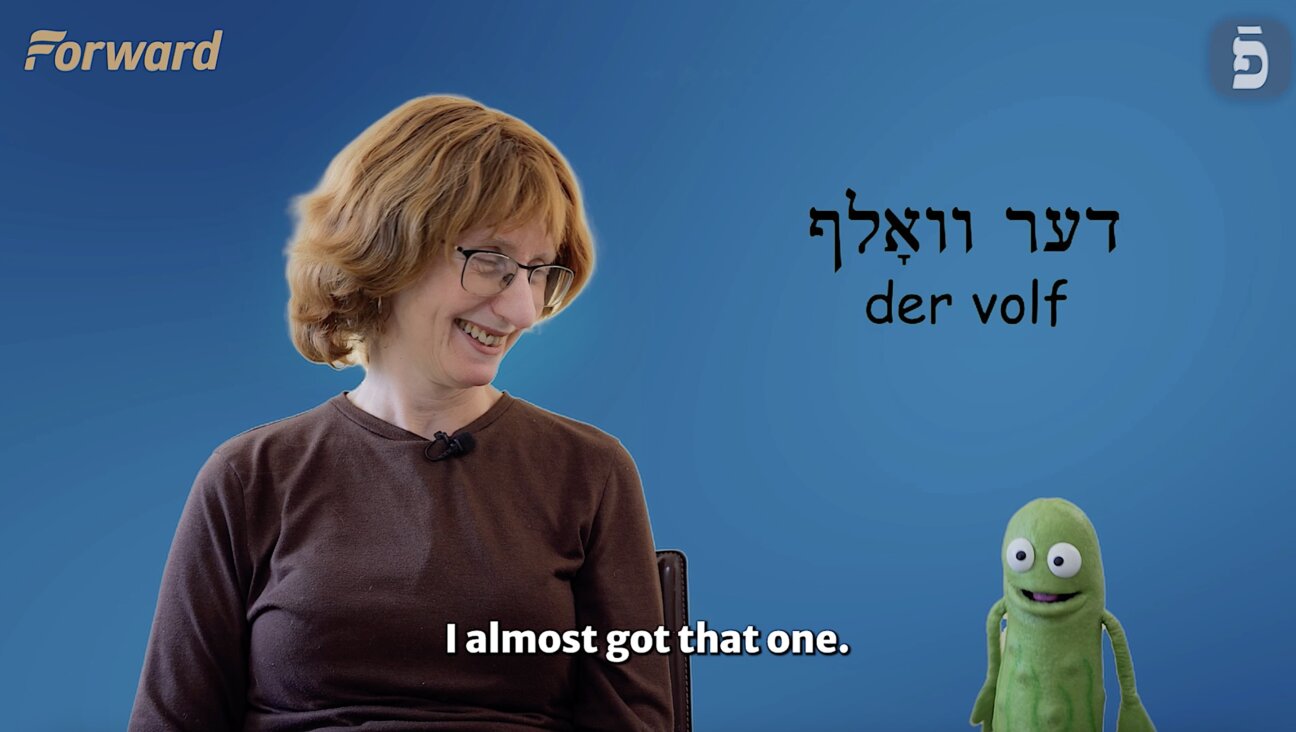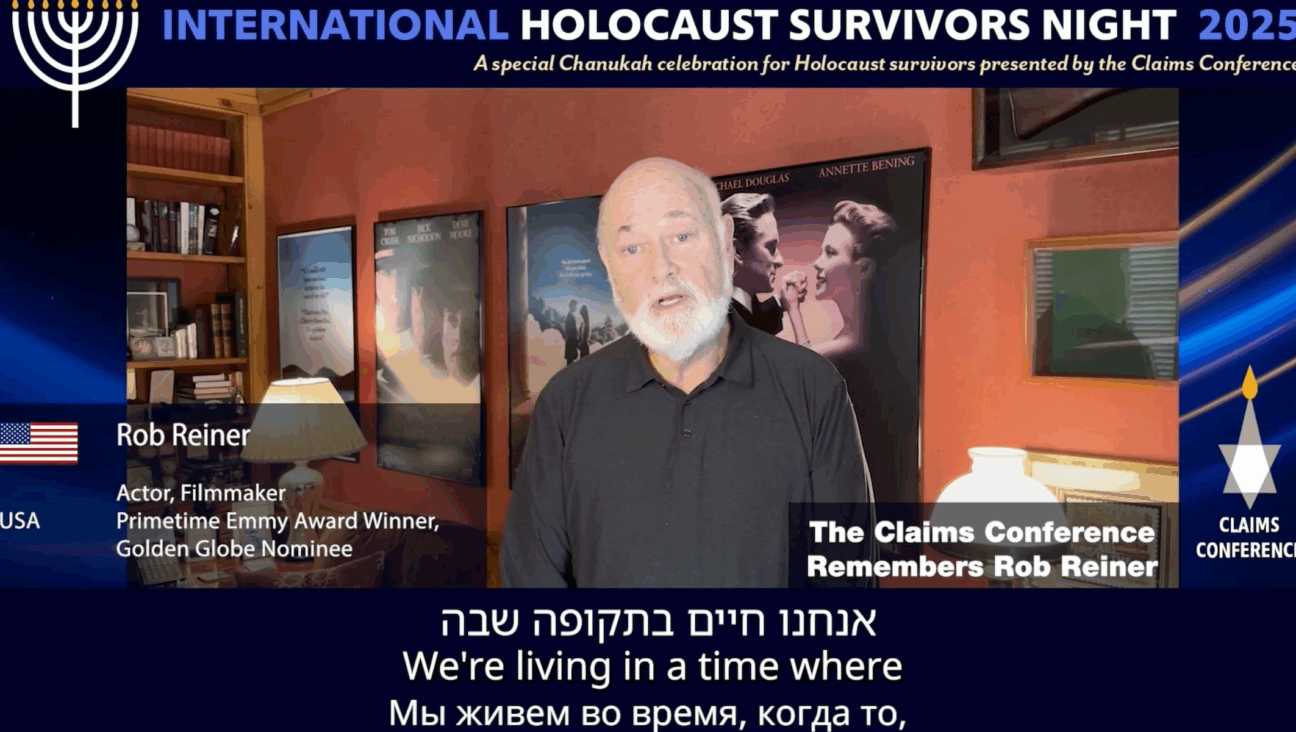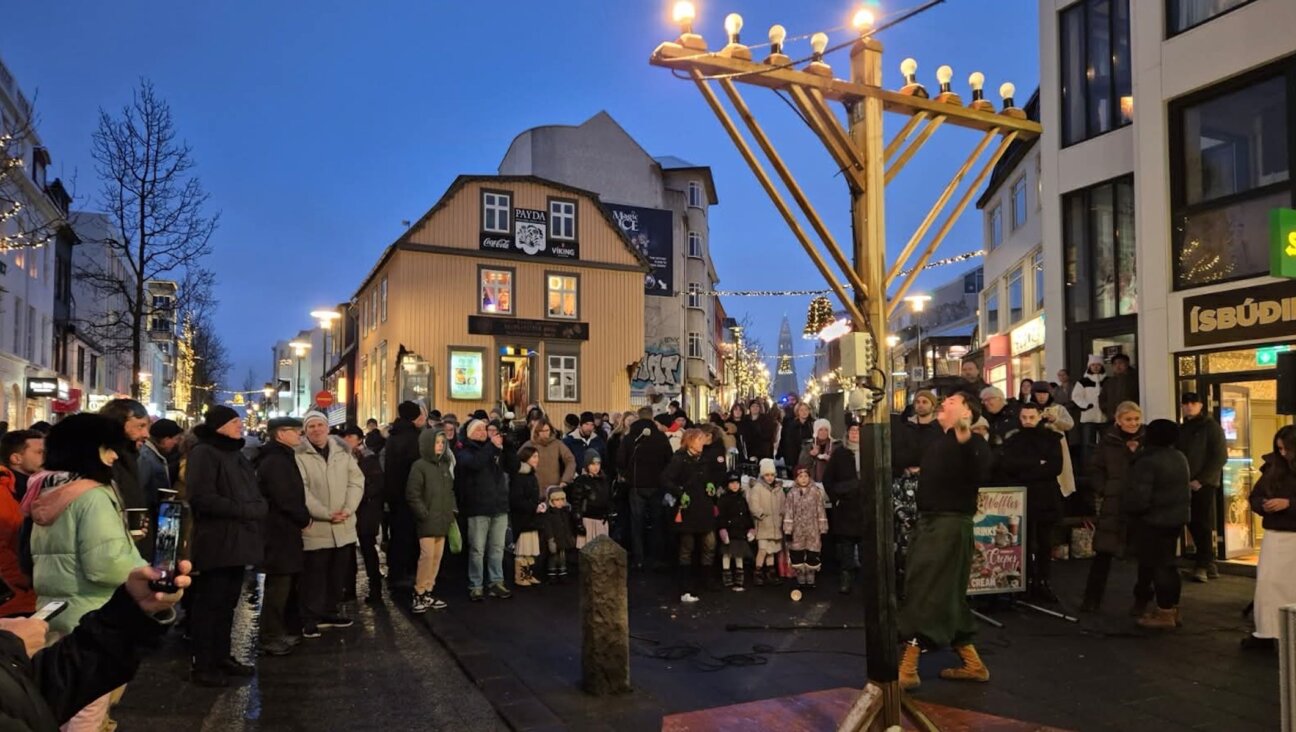In New Yorker doc ‘Nina & Irena,’ a director helps his grandmother open up about the Holocaust
Daniel Lombroso sees “Nina & Irena,” his film about his grandmother, as a coda to his 2020 documentary “White Noise”

Daniel Lombroso, second from right, with his grandmother Nina Gottlieb on the set of “Nina & Irena.” (Courtesy of Lombroso)
(JTA) — Daniel Lombroso sees “Nina & Irena,” his documentary short film about his grandmother, a Holocaust survivor, as a coda to his 2020 documentary “White Noise,” in which he followed leaders in the “alt-right” movement.
For the four years during the making of “White Noise,” he was surrounded by neo-Nazis, who were on the cusp of a resurgence around the 2016 presidential race. “I never thought about my own connection to the material in any detail, and then I realized the reason I cared so much about this story before anyone else in the country was because of my grandparents,” he told the Jewish Telegraphic Agency. “It was the stories that I grew up with that made me vigilant about extremism and curious and concerned.”
In “Nina & Irena,” which will be released through The New Yorker on the magazine’s digital channels on Wednesday, Lambroso’s Polish-born grandmother Nina Gottlieb — 90 during filming and 91 now — opens up after eight decades about her experiences during the Holocaust, when she lost about 25 members of her family, including her sister, Irena. Only she and her parents survived.
The New Yorker Studios film relates Gottlieb’s tale through on-camera interviews with Gottlieb that are interspersed with archival footage. Much of the film depicts simple moments of joy with her family, such as doing Zoom yoga with her grandson and her 90th birthday party surrounded by her children, grandchildren, and great grandchildren. Gottlieb is fully independent, lives alone in Long Island and still has an active lifestyle.
“The film is about the richness of her life,” Lombroso said. “There’s a lot of what they call Holocaust fatigue that we all grew up watching a lot of Holocaust films and hearing from survivors and you expect certain things. You expect the train tracks and you expect Auschwitz and smoke and it was very important for me to not necessarily avoid the horrors — you have to understand the horrors — but also balance them with the comedy of her life. She’s so funny.”
The film has been a success on the festival circuit, including winning best short film at the Mountainfilm Festival in Telluride. The documentary festival DOC NYC included it among its “Short Lists” predictions for top contenders for Oscars and other awards.
Growing up in New Rochelle, New York, Lombroso knew that his grandmother was a Holocaust survivor, but she never spoke about her experiences during the war. She thought her stories were too horrible for her children and grandchildren when they were young. She always thought she would tell them later, but later never came. Lombroso realized that now was his chance to finally ask, before it was too late.
In the film, Gottlieb talks about her childhood in Kielce, Poland, and her relationship with her sister, spying on Irena and tattling to their mother. Even when discussing her sister’s disappearance, she has a matter-of-fact way of telling these stories, accepting what happened and not dwelling on the past.
Lombroso said her testimony helped him avoid the cliches of documentary filmmaking. Too often, he explained, “you’ve gotten your main subject to pour themselves out in front of the camera like it’s a therapy session. My grandmother doesn’t go there,” he said. “At first, I thought that would be a problem.” However, “with distance and going through screenings, I realized that’s what makes the film so different and special. Her message is one that you don’t hear much: Keep going in life. Don’t feel sorry for yourself. And if someone like her doesn’t feel sorry for herself [after] losing upwards of 20 family members, then I certainly can’t.”
Another surprising aspect of the documentary is Gottlieb’s compassion for her tormentors. Having been evacuated to Prague, she saw the liberated Czechs pour tar on German officers and burn them alive. She was horrified.
“One of the worst moments of the Holocaust for her was watching a German officer be burned alive by Czech bystanders. She says, ‘You don’t do that to other people. We’re all born little adorable children. What happens to us?” Lombroso said. “The person she has sympathy for is her perpetrator and I just find that so rare in this day and age.”
In order to get this level of honesty from his grandmother, Lombroso approached this project, his first personal film, like his previous work at The New Yorker, where he is a staff filmmaker, and before that at The Atlantic.
“I’m used to embedding myself with people who I disagree with. I always try to understand subjects in the same way. Even when I was dealing with Richard Spencer, who is a famous white nationalist, I was trying to understand the root of his ideology and how he became who he is today,” he said. “I wanted to understand how someone becomes that f–ked up. We went skiing together and I met his mother. That’s the kind of reporting I just love doing and I think people open up to me because I don’t feel judgmental towards them. I just want to understand.”
And despite his love for his grandmother, he tried to keep a certain creative distance. “My grandmother had no editorial control,” Lombroso said. “She saw the film for the first time a few days before it premiered, and I told her you cannot change anything. And sure, there’s a tenderness in the film that comes through because I love her and feel close to her, but it was important to me not to compromise my practice in any way with her story.”
The one time he did let her weigh in is when he showed her a synopsis of the film that mentioned survivor’s guilt. She was furious.
“She said, ‘I don’t feel guilty about anything,’” Lombroso said. “I think it’s important to see someone like her and that’s what makes her so inspiring.”
This article originally appeared on JTA.org.
